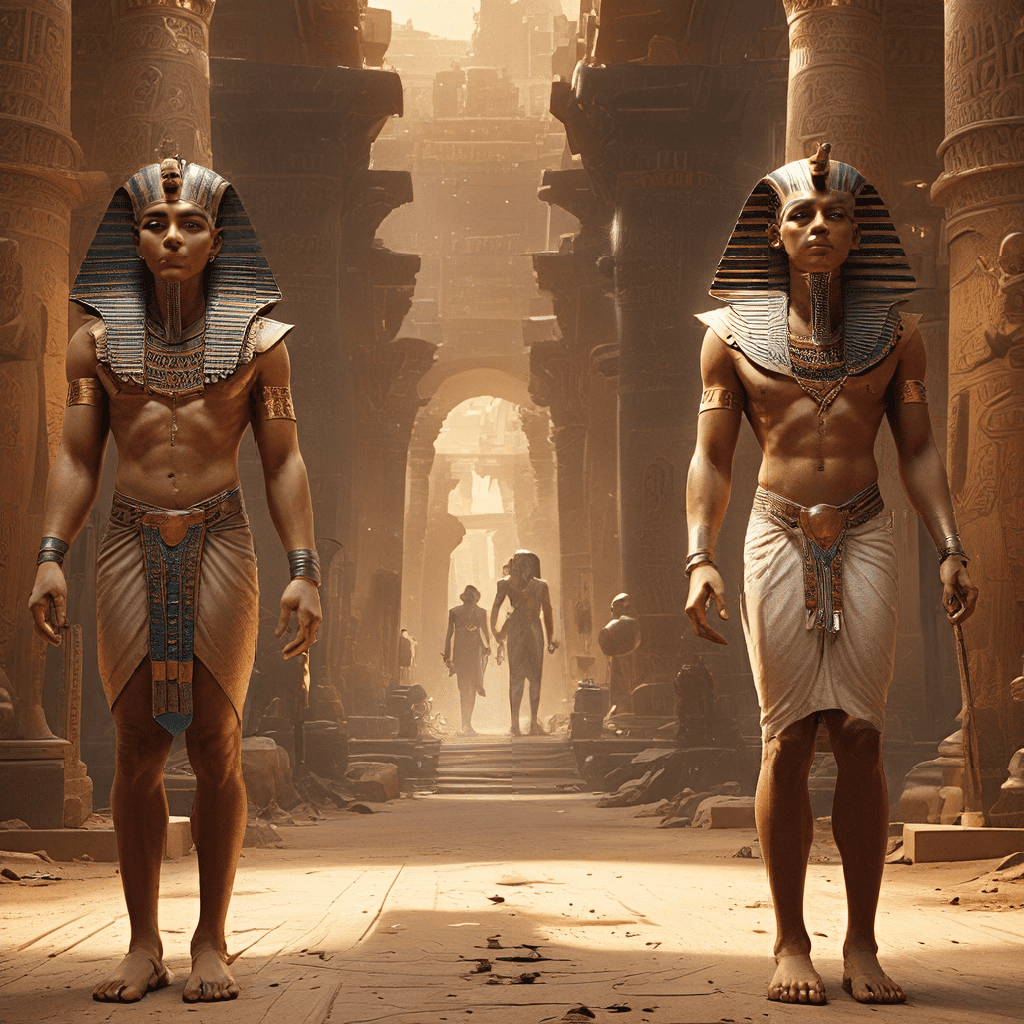The Afterlife: A Journey into the Heart of Ancient Egyptian Beliefs
For the ancient Egyptians, death wasn’t an end, but a transformation. They believed in an afterlife, a realm where the soul continued its journey, and this belief deeply impacted their lives. The Egyptians developed complex rituals, beliefs, and practices around the afterlife, hoping to ensure a successful transition for the deceased into the next world.
1. Introduction: The Concept of the Afterlife in Ancient Egypt
The ancient Egyptians viewed death as a journey, not a ceasing. They believed that the soul, called the “ka,” continued to exist after the physical body perished. The afterlife was a place where the deceased would be judged, and those who passed the test would enjoy eternal life in a paradise called the “Field of Reeds.” This belief in the afterlife was deeply woven into every aspect of Egyptian society, from their daily lives to their elaborate burial practices.
2. Death and the Journey to the Underworld
When an Egyptian died, their body was prepared for the afterlife through a complex process of mummification. This process aimed to preserve the body, ensuring the “ka” could return to it after its journey through the underworld. The journey was arduous, filled with challenges and trials. Upon death, the soul was believed to leave the body and embark on a voyage through the treacherous Underworld, a realm ruled by the god Osiris, the king of the underworld. The soul’s journey was fraught with dangers, including the terrifying “Ammit,” a monster who devoured the souls of the wicked.
3. The Weighing of the Heart Ceremony
One of the most significant events in the journey to the afterlife was the “Weighing of the Heart” ceremony. Here, the heart of the deceased was placed on a scale against the feather of Ma’at, the goddess of truth and justice. The heart represented the soul’s essence, while the feather signified truth and balance. If the heart was lighter than the feather, the deceased was deemed worthy of entering the Field of Reeds. If the heart was heavier, it was devoured by the monster Ammit, signifying eternal damnation.
4. The Role of Osiris and Anubis in the Afterlife
Osiris, the god of the underworld, played a crucial role in the afterlife. He was responsible for judging the souls and deciding their fate. Anubis, the jackal-headed god of mummification and the dead, guided the souls through the perilous Underworld. Anubis’s role was not only to ensure the proper preservation of the body but to escort the soul through the challenging journey to the afterlife.
5. The Hall of Truth: Facing the Divine Tribunal
The Hall of Truth, a place where the souls faced the judgment of Osiris, was a pivotal point in the afterlife journey. Here, the soul had to declare its innocence before forty-two deities representing various aspects of Egyptian morality. The deceased had to prove that they had lived a righteous life, free from wrongdoing. If they successfully defended their actions, they were allowed to proceed to the final judgment before Osiris.
6. Navigating the Underworld: Challenges and Trials
The Underworld was a dangerous and mysterious place, filled with challenges and trials. The soul had to navigate treacherous landscapes, confront fearsome creatures, and solve riddles that tested their knowledge and wisdom. The journey reflected the complexities of human life and the challenges faced by the deceased in their earthly life. The soul’s ability to overcome these obstacles determined the fate of its eternal life.
7. The Field of Reeds: A Paradise for the Righteous
For those who successfully navigated the challenges of the Underworld and passed the judgment of Osiris, the reward was eternal life in the Field of Reeds. This paradise was a lush and fertile realm, a place of joy and abundance. Here, the righteous souls lived in eternal peace, free from suffering and pain. The “Field of Reeds” was a testament to the Egyptians’ belief in a positive and fulfilling afterlife for those who lived a righteous life.
8. Egyptian Funerary Practices and Their Connection to the Afterlife
The ancient Egyptians developed elaborate funerary practices, directly connected to their beliefs about the afterlife. The mummification process, the construction of elaborate tombs, and the inclusion of grave goods were all designed to ensure a successful transition into the afterlife. The tombs were decorated with intricate scenes from mythology, depicting the journey to the Underworld and the hopes for a peaceful existence in the Field of Reeds. These practices demonstrate the profound impact of the afterlife beliefs on the daily lives of ancient Egyptians.
9. The Importance of Amulets and Spells
The Egyptians believed that amulets and spells possessed powerful magical properties. These objects, worn or buried with the deceased, were believed to protect the soul during its journey through the Underworld and ensure a smooth passage into the afterlife. Amulets often depicted deities associated with protection or specific aspects of the afterlife journey, like the “scarab beetle” symbolizing rebirth and resurrection. Spells and chants were recited during the funeral rituals, believed to guide the soul and provide protection from the dangers of the Underworld.
10. The Evolution of Egyptian Beliefs on the Afterlife
Egyptian beliefs about the afterlife evolved over time. While the basic concept of a journey to the Underworld and the judgment of Osiris remained constant, details and interpretations changed across different periods. Over the centuries, new deities rose in importance, new rituals were introduced, and the portrayal of the Underworld became more complex and sophisticated. Despite these changes, the core belief in an afterlife persisted, reflecting the Egyptians’ enduring fascination with life beyond death.




